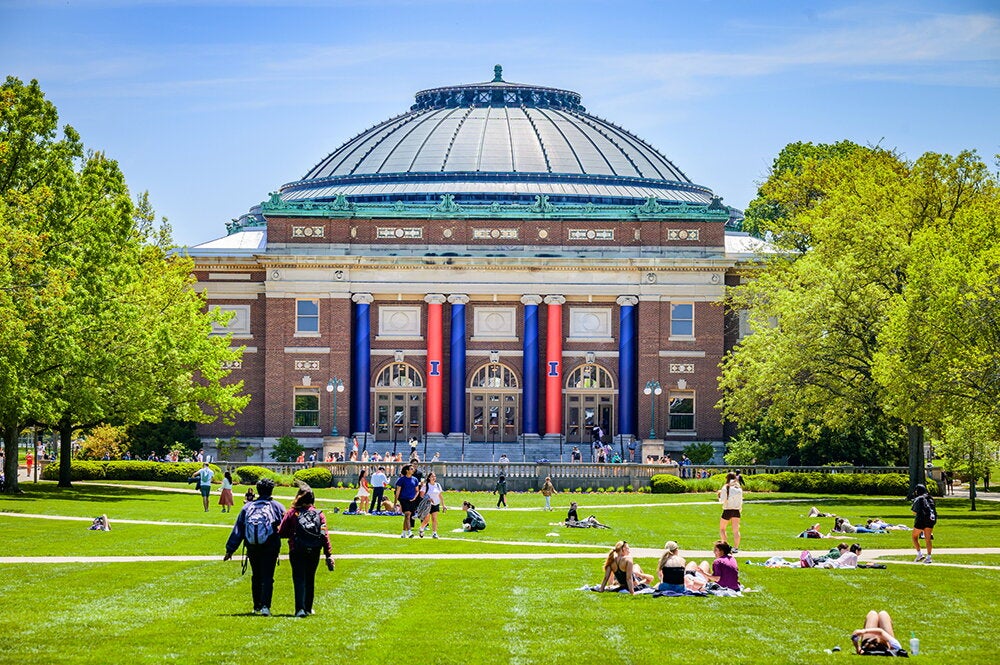

The credit freeze is showing signs of thawing, says LAS economist Anne Villamil.
Villamil points to the London Interbank Offered Rate, or Libor, which is the interest rate that banks charge each other for three-month loans. “Libor has dropped to the lowest level in four years and is tangible evidence that the credit crisis is easing,” she says.
Just before the election, credit dried up in an alarmingly short period of time, Villamil explains. “Banks weren’t willing to lend to each other, and that’s important because when they stop lending to each other, they won’t lend to other people in the economy.”
She says we are also beginning to see bank “workout plans” to help homeowners reschedule mortgages on principal residences to avoid default. This will help stabilize the housing market, which is crucial for preventing renewed pressure on the economy.
The goal of the bailout, Villamil says, was to make “massive injections of liquidity aimed at restoring confidence and getting the funds flowing again.” As a result, credit is beginning to unfreeze. But she cautions that “the markets are still fragile. We’re not out of the woods yet.”
She says it is important to distinguish between the credit crisis and the recession, which are distinctly different. The credit crisis was triggered, in part, when low interest rates and a flat yield curve sent investors off in search of higher returns. The result: They took on too much risk, and when financial institutions began to fail, there was a flight to safety—a tremendous withdrawal of funds from the stock market.
With a credit crisis, economists are most concerned that fear will become contagious.
“The fear starts in one place and then spreads to other places in the global market, even to places that do not have fundamental problems,” says Villamil. “That is why it is common when there is a credit crisis to have a very quick and substantial intervention. You’re trying to forestall panic.”
That is precisely what the bailout aimed to do—provide liquidity and stem the panic.
A recession, meanwhile, is a significant decline in economic activity spread across the economy for more than a few months, Villamil says. But a recession has yet to be officially declared by the National Bureau of Economic Research.
“Government intervention in a recession is always more controversial because it’s very hard to fine-tune the macro economy,” she says. For instance, it appears that the stimulus checks, which the government sent out to ward off a recession, were put into savings by a significant number of people, rather than injected into the marketplace.
Americans have a dangerously high level of indebtedness that needs to be paid down over time through saving, Villamil says. The problem is that when consumers save more during a recession, it exacerbates the economic slow-down.
To deal with this Catch-22, what’s needed is rebalancing, she explains.
Countries like the United States have to consume less and start saving more, but this must be balanced by increased consumption in the world market by high-savings countries, such as Japan and China. This will maintain employment, a crucial goal. China recently announced a significant stimulus package, which she says is a positive development.
“China’s savings rate is 50 percent,” Villamil notes. “So if they consume more, the United States saves more, and trade continues, this will help rebalance the economy.”
When Japan and South Korea were hit by a financial crisis in 1997 and ’98, those countries tried to stimulate spending and get the economy moving again, but people continued to save, deepening the crisis. In the end, the crisis cost Japan 24 percent of Gross Domestic Product (GDP) and South Korea 31.2 percent of GDP. To put this in perspective, the United States’ last financial crisis, in 1988, cost 3.7 percent of GDP.
Another factor was that Japan did not act fast in responding to the ’97-’98 Asian market crisis, as the United States recently did with the bailout.
No one is happy about bailout costs being spread to U.S. taxpayers, Villamil says. “But the point is that when you’re worried about a collapse of the financial system, the alternative is clearly even worse.”
Although a credit crisis and recession are distinctly different, they can be related, she adds. When firms cannot get credit, they cut back on production and eventually employment; and when consumers cannot get credit, households cut back on consumption. As a result, credit crises can be associated with more severe recessions.
“It is good news that the credit crunch seems to be easing, but consumer confidence remains low,” she says. In addition, unemployment has risen to 6.5 percent and the economy just had a fourth-quarter decline in GDP—a modest 0.3 percent decline. Also, the markets continue to be volatile and the default rates on the high level of debt in the economy are likely to go up, especially as people lose jobs.
“This sounds like a lot of gloom and doom, but over time the United States’ GDP has a distinct upward trend,” Villamil says. “Recessions are difficult, but the U.S. economy will recover.”


